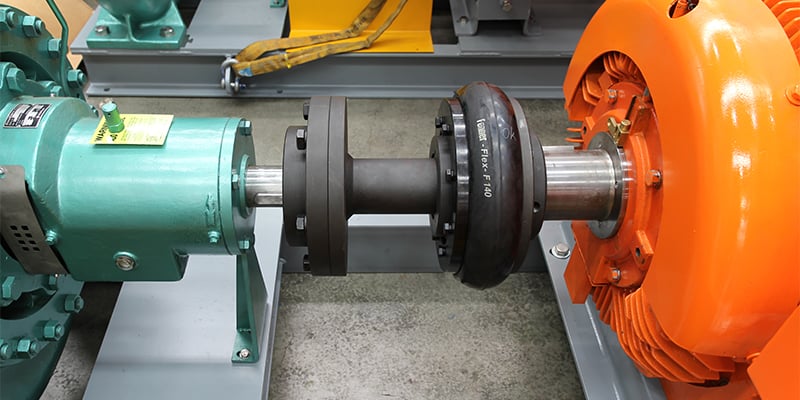As energy and cost efficiency have become important factors when selecting a pump for operation, minimising equipment downtime is crucial. Severe misalignment can have significant effects on your plant’s efficiency.

Misalignment can occur when the rotation centerlines of two or more pump parts are not in line with one another. This can go undetectable - depending on the severity of the misalignment as sometimes vibration is normal for pumps.
When a pump is misaligned, maintenance officers will notice a dramatic increase in vibration along with:
- bearing life of the pump and driver will decrease and cause high temperatures or oil leakage;
- as mechanical seals cannot handle misalignment these will fail;
- shaft failure or breakage can occur;
- couplings will wear quickly or fail;
- excessive vibration will cause excessive noise or grinding on pump parts;
- additional power consumption, generally more than 15% and;
- damage to the couplings inside.
If you are looking to align your pump, consider the following methods and tools. These each have significant pros and cons and should be discussed with your pump experts prior to performing to avoid further downtime…
Straight-Edge: This requires placing a straight edge on the pump and motor coupling, then checking visually if the components are aligned.
Although it is quick and easy to perform, it is highly inaccurate. Due to today’s high-performance equipment and operational expectations, an accurate measurement is crucial to avoid future downtime.
Reverse Dial Indicator: This method uses two indicators that highlight radial run-out and angularity. Readings are plugged into mathematical formulas to calculate shim requirements for optimal alignment.
Reverse Dial Indicator are very accurate, far more than the straight-edge method, however it is time-consuming, requires technical skills and can produce reading errors.
Laser Alignment: This involves lasers that determine the relative shaft positions. The computer than suggests the recommended adjustments necessary for alignment.
Laser alignment is the most accurate method available (to 0.0001) and once familiar staff can align the pump and motor quickly. However, it is the most expensive method available and can be complicated to set up.
Global Pumps Workshop Manager, Robin says “Laser alignment is more accurate and generally quicker as we know exactly what needs to move”
“It also has the advantage to print the report for the customer and show it was aligned before leaving our workshop”.
For effectiveness and accuracy, Global Pumps suggest laser alignment.
To determine the best method for your pump, or to chat to an expert, contact our Global Pumps team. We have over 40 years’ experience aligning pumps with couplings.

